The Fisherman’s Bastion is, in all likelihood, one of the most visited attractions in Budapest. This is the place where locals and tourists come to enjoy the city views. But what is the history of Halaszbastya? Why is the bastion so decorative rather than defensive as bastions are? First let’s see the quick facts in the short history, and then the extended version for those who want to learn more.
Short History of the Fisherman’s Bastion
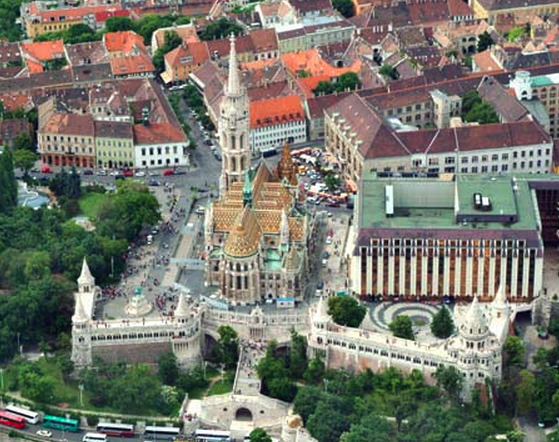
The Fisherman’s Bastion was built between 1895 and 1902 as part of the series of developments that were to celebrate the 1000th birthday of the Hungarian state.
Consequently, the Bastion was inspired by the architectural style of the early medieval times (Neo-Romanesque) approx. the year 1000, when the first Hungarian king started his rule. What is more, the 7 towers of the Halaszbastya features the 7 Hungarian chieftains who had led their tribes to the present day Hungary to settle down in 895, and the Statue of St Stephen (1906), the first Hungarian king (1000-1038). In short, it is a historical monument for the millennial Hungary.
The architect of the Halaszbastya is Frigyes Schulek, who also restored and redesigned the Matthias Church (Church of Our Lady). The construction of the Fisherman’s Bastion is intertwined with the restoration of the church: its historical architectural style was also picked to suit the church redesigned in a later medieval style (Neo-Gothic). The T shaped Bastion arrangement was to embrace the church while enhancing its beauty, and also to connect the Castle hilltop with the Danube side settlement, Fishtown aka Watertown.
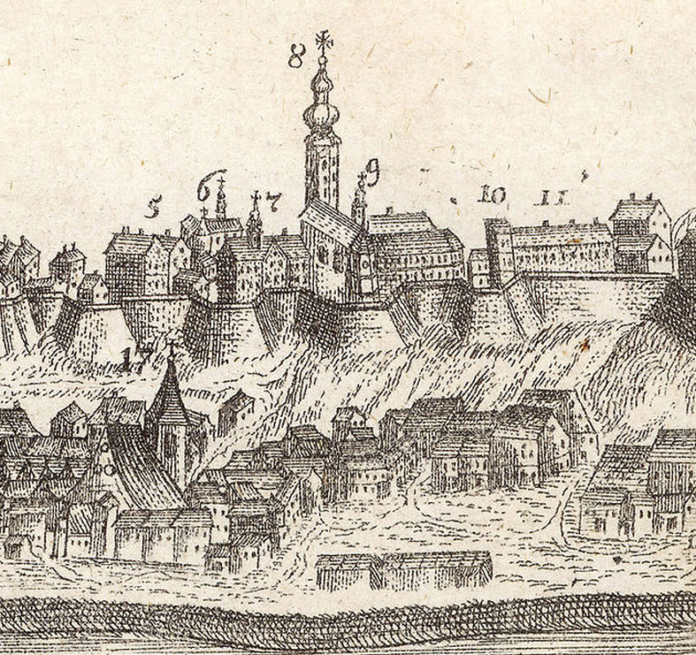
The bastion was built as a viewing terrace with lookout towers on the base of a stretch of the castle walls (from the 17-18th century, built after the Buda Castle Siege). Rather than building sturdy thick stone walls, the intention was to present the locals with a communal panorama terrace, as the Buda Castle was no longer considered to be a military place. The romantic notion was to recall the old times, so Halaszbastya is often likened to a castle prop, which does not feel real. It was meant to be like a fairy tale, feel like history rather than be history.
The ceremonial, wide stairs leading up to the Fishermen’s Bastion provide a dramatic entrance to the Castle Hill attractions and to the views of the Pest side sights. The stairway features further historical statues, from bottom to top: the Statue of John Hunyadi, the statue of St George Piercing the Dragon (the replica of the 15th century statue in Prague made by medieval Hungarian masters, the Kolozsvari Brothers), and the 10th century soldiers guarding the gate (at the top of the stairs, under the arch).
The Bastion was damaged in WW2, but soon restored by the son of the architect. By the 1980s, the walls of the Bastion became grey due to the household fumes, and urban air pollution. Also, many of the statues were in neglect (losing limbs, crumbling face, etc.). Thank to the Castle District municipality – urging the state and the capital to contribute to the enormous restoration costs – Halaszbastya is fully restored now.
During the construction of the Fisherman Bastion, the medieval underground St Michael Chapel was revealed, and part of it, incorporated into the Bastion. You can descend into the Chapel from the Fisherman’s Bastion.
History of the Fisherman’s Bastion Budapest

If you look at the Fisherman’s Bastion in Budapest you can see that its walls are quite new, and the whole structure is more like a fancy terrace than a fortification or a castle wall. You are right, the Fisherman’s Bastion was built between 1895 and 1902. Its walls are whitish, there are lots of windows, stone benches, arches, arcades, etc. which castle walls do not have. The current building of the Fisherman’s Bastion was already designed to be a beautiful panoramic view terrace to serve as a perfect lookout point in any weather, and also to enhance the beauty of the Matthias Church. These two works were designed by Frigyes Schulek who reached back to the Romanesque and Gothic architectural details found in Hungary.
Fisherman’s Bastion in the Middle Ages
During the medieval times, up to the 19th century there were thick castle walls on the place of the current viewing tower. There were many sieges, and the castle building, including its walls, were often destroyed and rebuilt. The castle was founded by Hungarian kings, conquered by the Turks in the 16th century, re-taken by the Austrians, attacked by the Nazi and Russian troops in the 20th century, so you can imagine that there were not many peaceful years in the history of the Buda Castle Hill.
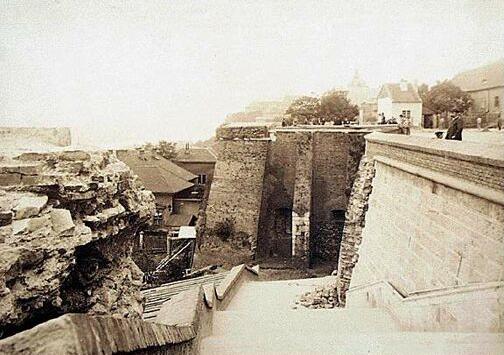
The city atop the Castle Hill (Varhegy) was protected by thick stone walls, and the various sections of the walls were protected by the castle guards and royal arms, and if needed, by the residents of the castle. Some historians say that this particular part of the walls was protected by the guild of fishermen (halasz), who lived under the walls in the so called Fishtown or Watertown, between the river Danube and the Castle walls (Water Town being a little town within Buda). In peace, they would fish, and sell their fish on the fishmarket up in the castle, in war time, they would climb up to the Castle, and take their due part in protecting their home town, Watertown (Vizivaros). There was a little gate as a shortcut in the wall to cater for the foot traffic between Watertown and the Buda Castle, as the castle had its fish market too where the fishmongers could sell their fresh fish.
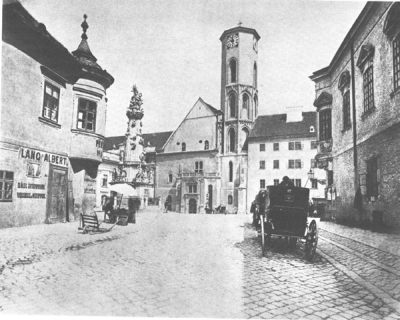
By the end of the 19th century, Hungary was in peace for decades, and very dynamically developing as a major cosmopolitan city in Europe. The Buda Castle Quarter officially lost its military function in 1874, and there were plans to turn the Castle Hill into a more communal, and less military place. The location of the Fisherman’s Bastion viewing terrace was perfect for two reasons. First, the much neglected Matthias Church was to be restored to regain its former glory, and needed a better context to emphasize the beauty of the coronation cathedral. Second, the river views in Budapest were fascinating, but could not be enjoyed leisurely from the hill. The old Message Tower (Hiradas Torony) of the Buda Castle walls was picked as the best base for the new main tower of the Halaszbastya.
In the 1890s the Matthias Church (Matyas templom) looked completely different. Its Gothic parts were covered and / or rebuilt in Baroque style. Baroque was the trendy architectural style in the 18th century, and many of the historical castle buildings are still good examples of the Baroque fashion on the Castle Hill. Not only was the Matthias Church different, but also its settings. The church was not a stand alone building.
Attached to the Matthias Church (officially called the Church of Our Lady), there was a Jesuit Monastery (Jezsuita Kolostor), which made the church less striking. In 1773 the Jesuit Order was completely dissolved by Pope Clement XIV, so the college and the other Jesuit buildings around the church became the property of the town. The Ministry of Finance moved to the Jesuit College. By the 1880s the complex of the Matthias Church and the Ministry was in bad state.
The plan made by Frigyes Schulek (at the end of the 19th century) was first to free the church from the old building of the Jesuit College, then get rid of the unsightly Baroque layers put on the church (which were not considered to be very well built, and hid the older Gothic details), and finally, to build a viewing tower by the church that further enhances its beauty, while, at the same time, provides a perfect terrace for a breathtaking city view, catering for hundreds of visitors if needed, but without diminishing the beauty of Matthias Church so that the church and the bastion serve as beautiful sights from across the riverside on the Pest side.
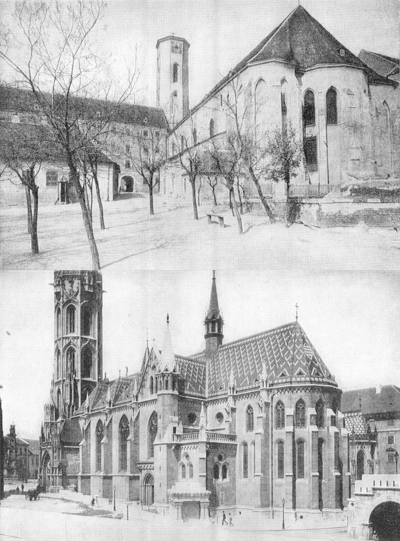
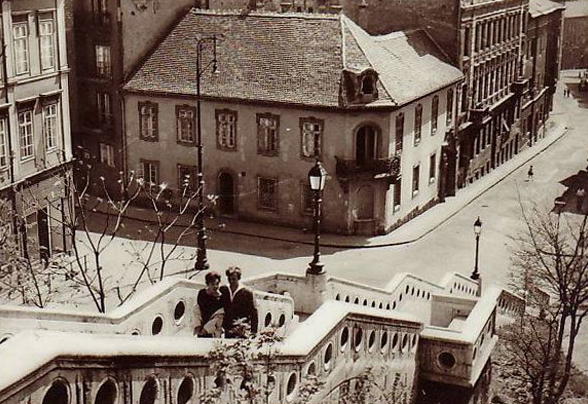
As part of the remake, not only the Jesuit Monastery was unattached (parts of it can be seen in Hotel Hilton Castle District today), but also the Jesuit Stairs.
Having hundreds of viewers in mind on the Fisherman’s Bastion, Schulek needed to transform the narrow, outworn steps of the Jesuit stairs – connecting the Castle hilltop with the Danube riverfront – into an airy and spectacular entrance, a welcoming portal to the Buda Castle quarter. Instead of the old Jesuit Stairs, new Jesuit stairs at another location were built.
There were huge investments to make Budapest a wonderful place from the 1890s to the 1910s. No wonder that one of the first underground railways on continental Europe (after the London Underground or the Athens Metro) was built in Budapest. And built well, as it is still in use. Hardly any big cities had underground traffic at that time. There was a series of market halls built, with impressive, spacious designs like the one you see now when visiting the Great Market Hall in Budapest. The Millennium Monument in Budapest along with the Vajdahunyad Castle was built on the Heroes’ Square, the Hungarian Parliament building was founded at that time. The construction of the Fisherman’s Bastion, along with the restoration and redesign of the Matthias Church was part of the enthusiastic developments of the 1890s in Budapest.
Frigyes Schulek started to rebuild and restore Matthias Church in 1873. As part of the restoration and redesign of the 19th century Baroque church into its present day mixture of older Gothic and newer Neo-Gothic look, the architect felt the need to redesign the grounds around the castle. This had major consequences on both the designs and the building of the Fisherman’s Bastion. The construction of the Fisherman’s Bastion started just before the Matthias Church was finished by 1896, the thousandth birthday of the Hungarian state.
The Fisherman’s Bastion was to embrace with its L shaped arms the Matthias Church and the building of the now detached Jesuit College / Monastery. It was also the entrance point if you decided to walk up the castle hill slopes to the Church rather than take the bus to get atop the Varhegy Hill.
In addition, the central statue of the Fisherman’s Bastion, the elevated statue of King St Stephen (Istvan Kiraly) was to face the Matthias Church (or Church of Our Lady). All elements of the Fisherman’s Bastion, and its statues, ramparts, stairs, cloisters were to harmonize with the Coronation Cathedral of the Buda Castle, where King Matthias
Modern Day History of Halaszbastya
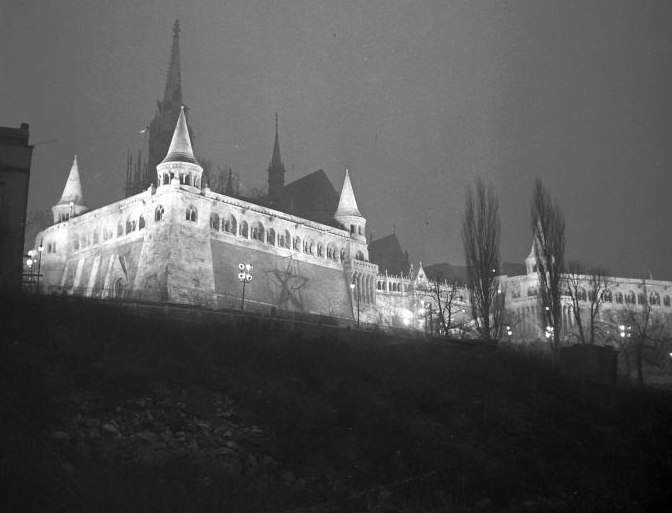
In WW2 the Fisherman’s Bastion was seriously damaged, and the restoration of the Neo-Romanesque viewing tower was carried out by the son of Frigyes Schulek, Janos Schulek. The world war ruined the neighboring buildings too, the Ministry of Finance behind the bastion burnt out in the Budapest siege. The Ministry moved to another building, and the ruinous site was later chosen to be the site of a new hotel with river panorama, and modern facilities.
During the Communist decades, there was a Soviet Red Star hung on the riverfront walls of the Fisherman’s Bastion, which could be seen every day from the Pest side too to remind people that it is the Soviet sheriff ruling the town, and the country.
The biggest change around the Fisherman’s Bastion came in the 1970s, when the second five star hotel was built in Budapest, the Hilton Castle District, which is right behind the towers of the Halaszbastya.
The Hilton Hotel on Buda Castle Hill opened in 1976 in a dazzling new building, in a real American Dream style, with lots of shiny windows, modern technology, which was rarely seen in the then Communist Hungary. Many disliked the new Hilton as the modern building with its reflective glasses was / is quite in contrast with the historical image of the Castle. The first Hilton hotel in Budapest involved the complete destruction of the old Jesuit Monastery (also used as the Ministry of Finance).
While the Jesuit Monastery was simply unattached from the Matthias Church in 1897, in the 1970s only a few parts remained from the Jesuit Monastery and the 13th century Dominican Church. What is a less known fact is that the construction of the Fisherman’s Bastion destabilized the foundations of the 13th century Dominican Church, which had to be pulled down, as it became too dangerous to use. Now you can see the old chapel of the Dominican Church and some parts of the Jesuit Monastery in the Hilton Budapest.

These days you can enjoy the splendid panoramic views of Budapest’s UNESCO World Heritage, the river Danube along with its historical sights, from the Fisherman’s Bastion. You can sit on the benches, hide in the arcades when it rains, snows or when the midday heat in summer time gets hard to bear. You can stand on the balconies free of charge, or you can enter the top turrets to get a bit higher, or to get some more privacy for a little romance or contemplation. You can play at siege on the long stairs, let the children count the seven chieftains of the Magyar tribes who founded Hungary, Magyarorszag in 895.
The Chapel in Fisherman’s Bastion
St Michael’s Chapel in the Fisherman’s Bastion is first mentioned in the medieval chronicles (in 1443). The Chapel inside the Fisherman’s Bastion opens in March 2013. You can visit the Chapel for a small entrance fee.
Why is Fisherman’s Bastion called Fisherman?
There are several theories for explaining the origin of the name, one says that the walls were protected by the fishermen who lived below the walls, in Watertown (Vizivaros) also known as Fishtown in Budapest, and who also protected the walls in war time.
Others say that the name was used simply commemorating the fishermen who lived in Watertown by the river Danube (but who did not necessarily served as guardians of the city).
And the third theory goes that the castle’s hilltop fish market next to the Matthias Church gave its name to the Fisherman’s Bastion.
At any rate, we love the name, and we love the viewing terrace and its atmosphere. No matter how long your Budapest holiday is, do take a few minutes to visit the Bastion for its lovely setting and fascinating views.

How do You Say Halaszbastya?
The name of the Fisherman’s Bastion is Halaszbastya in Hungarian (halasz meaning fisherman). How do we say the name? Well, if you want to learn the pronunciation in Hungarian, there you go: hol-larse-baash-tia.
48

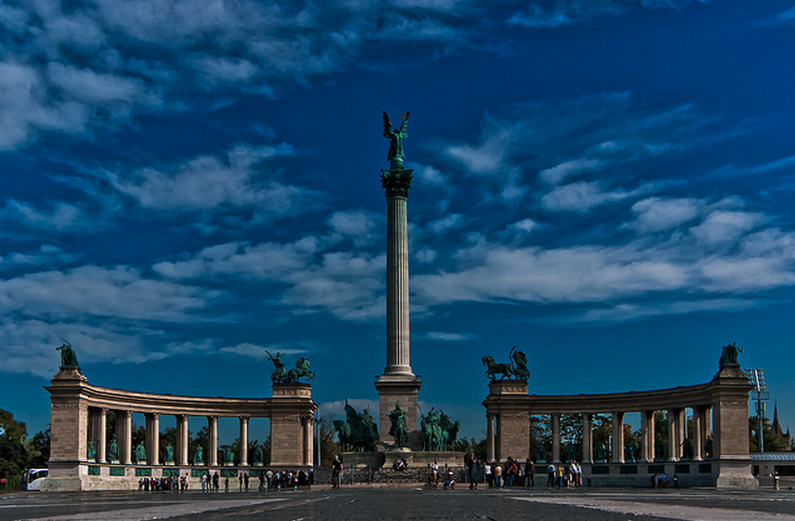
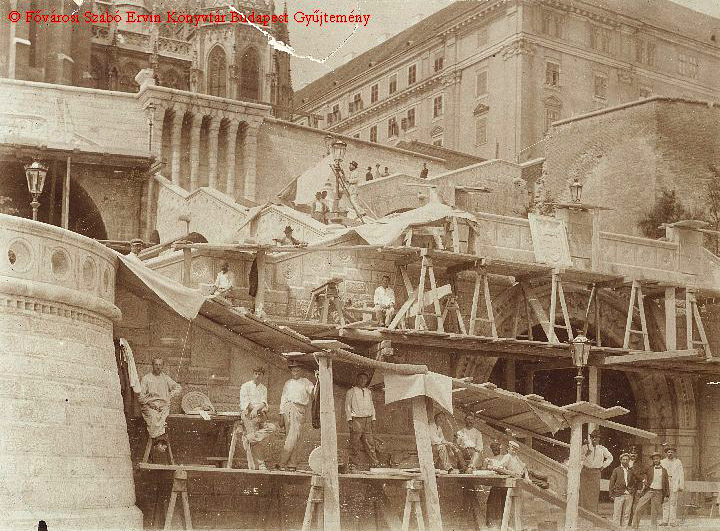
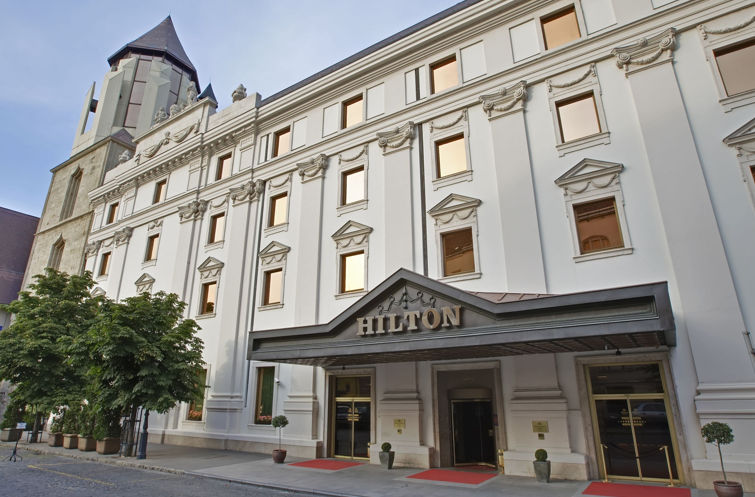
Could you describe the best time to visit Fisherman’s Bastion for the most breathtaking views of Budapest?
Dear Visitor,
Thank you for getting in touch.
We recommend the sunset hours or the sunny hours in the colder months so that you can enjoy the panoramic view.
Hope we can welcome you at Fishermen’s Bastion.
Thank you so much for this fascinating history! My husband and I were in Budapest in May 2023 and I fell in love with this city, especially the entire area of Buda Castle. I wanted to learn more about the area since we were only here for part of 2 days. Your site gave me so much insight into this area! Many, many thanks.
Dear Joan,
Thank you for your kind words, we are happy to hear that.
You are welcome!
I visited during the month of December, a few years ago and thought it was fantastic. The church is without doubt the nicest atmosphere and is beautiful, especially the painted walls and ceilings I have ever experienced in a church and I am not religious in any way.
Hello Mari, we are glad that you have liked it. Hope you will return in the future.
Thank you for the wonderful history of your beautiful landmark. We live Budapest and while away the hours enjoying the view and the vibe. Just a spectacular city all around with and without hordes of tourists. Much love from 🇨🇦
I have been there. Had no idea what it was or where I was when there in December 1996. But was in complete awe of it and the view of the Parliament from its doorsteps.
This place is far too crowded to be truly enjoyable. Hordes of tourists from around the world, especially from Asia.
Hello Fred, we are sorry to hear that your visit seem to have been spoilt by the popularity of the Fisherman’s Bastion. Indeed, this is one of the top attractions in Europe and there are many tourists who wish to take a good view of Budapest and its UNESCO World Heritage sites from the Fisherman’s Bastion / Halaszbastya
That said, all tourists, like yourselves, are curious, and there is no priority among visitors.
For a quieter time to enjoy the panorama from Halaszbastya, we usually recommend the early morning hours before 9 am, midday lunch hours (12pm – 1pm) and late evening hours after 7pm onwards. The Bastion is even open at 10 pm, but please make sure to have a safe walk / taxi / bus ride back to your accommodation if you visit at night hours.
The fisherman’s Bastion, and the entire area of Buda Castle, is so Beautiful and the views are amazing. i definitely recommend seeing this area during the day, and especially at night or early evening. I am staying at the Hilton and had no idea it was located in such a beautiful and historic spot. Knowing that the Hilton still has some of the monastery incorporated into the structure really makes it more special. The many tourists are fine. There is still plenty of space and it’s enjoyable to watch people and see the children enjoy part of Hungarian history
So what? Tourists are everywhere and thank God they are. It doesn’t kill the beauty of bastion, it improves it even more. Without people, it would be just an empty, sad walls.
Wonderful place for visit. I visited Budapest from 5 to 9 May 2018. Enjoyed cruise and sight seeing under the guidance of Timi of Dnata.
[…] then went to the Fisherman’s Bastion, which is also on the top of Castle Hill. This site gives more information about what the Fisherman’s Bastion is – basically a viewing […]
[…] Fishermans Bastion and Matthias Church […]
[…] Bastion was designed in the Neo-Romanesque style popular in the Middle Ages, when the first Hungarian king, St. Stephen, started to rule. A statue of St. Stephen is given a place of prominence on the grounds. Also, the bastion’s […]
[…] also is home to the Fisherman’s Bastion, also known as Halaszbastya, built as part of the 1000 year celebration of the city. Construction […]